Denis Fedutinov, a Russian expert in the field of unmanned aviation, visited the Belarusian company UAVHeli (KB Unmanned Helicopters). At the new design and production site opened in Minsk in 2024, well-known systems created at the Design Bureau were shown, including unmanned aircraft and helicopter-type systems, including one of the most recent developments - the Hunter reconnaissance and strike unmanned aerial vehicle. Denis Fedutinov kindly provided our blog with a photo report about his stay at UAVHeli.
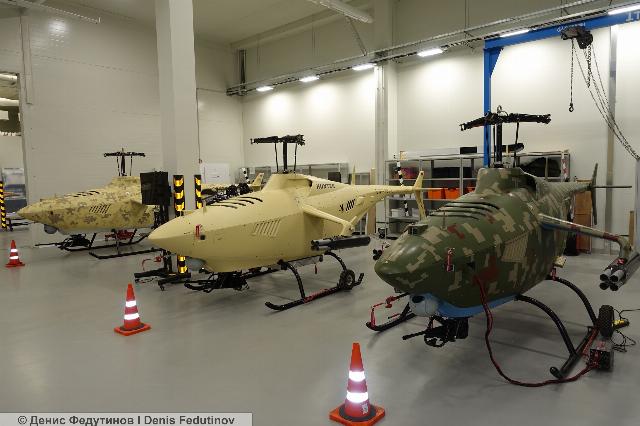
Unmanned aerial vehicles of the Hunter helicopter type in the workshop of the Belarusian company UAVHeli (KB "Unmanned helicopters") in Minsk. The Hunter UAV-based complex is designed to solve military and special-purpose tasks, including reconnaissance, surveillance, cargo delivery, as well as strike missions. The Hunter UAV is made according to a single-screw scheme with a tail rotor. The diameter of the main rotor is about 7.6 m. The flight duration is 9 hours at a maximum speed of 180 km/h. The maximum take-off weight is 750 kg, of which 200 can be a payload. Hunter is equipped with an optoelectronic surveillance system, a weapons system and an on-board defense system (BKO). The BCO includes an irradiation warning station and an interference release machine. © Denis Fedutinov
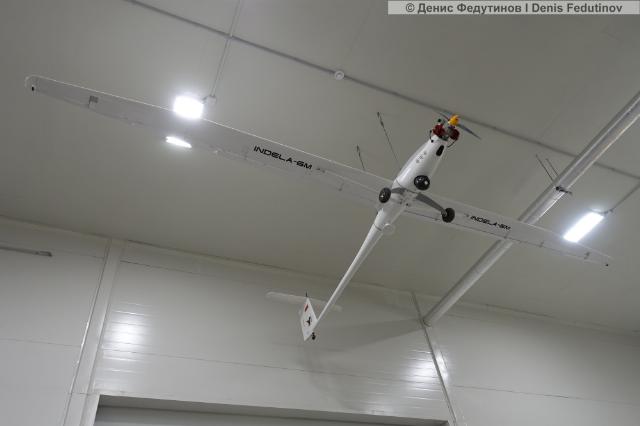
The UAV of the INDELA-6M aircraft type. The complex is designed for monitoring territories and facilities, fire conditions, power lines, conducting search operations, etc. The UAV with a maximum take-off weight of about 35 kg is built according to a normal aerodynamic scheme with a high-wing span of about 6 m and a T-shaped tail. A two-stroke two-cylinder opposed internal combustion engine located in the bow, rotating a pulling screw, is used as a power plant. © Denis Fedutinov
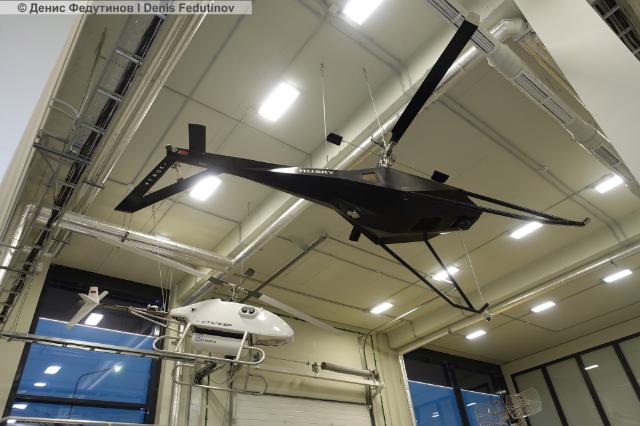
The H.U.SKY helicopter-type UAV (in the foreground) and the Stalker (in the background) are implemented according to a single-rotor scheme with a tail rotor. The first of them, which is designed to solve aerial reconnaissance and surveillance tasks, uses technologies to reduce visibility. The second UAV is a modification of the I.N.SKY device (see below). To solve specific tasks, it is equipped with ATOMTEX radar monitoring equipment. © Denis Fedutinov

I.N.SKY is an unmanned aerial vehicle of helicopter type, medium range, weighing up to 140 kg. A four-stroke rotary piston engine was used as the power plant. The complex based on the I.N.SKY UAV allows you to search and detect objects with the determination of accurate geographical coordinates, perform recognition and auto-tracking of moving objects, deliver cargo and dump payload. To do this, a payload of up to 25 kg can be placed on board. © Denis Fedutinov
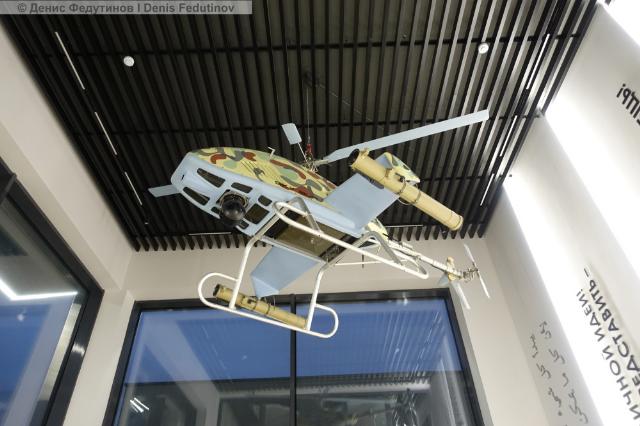
The SKY BUR unmanned reconnaissance and attack helicopter, based on the I.N.SKY version. He received a rotor with an increased diameter compared to the I.N.SKY model. The maximum take-off weight has increased from 140 to 150 kg. The UAV is capable of flying for 3 to 5 hours. It can be used for fire support of special forces and regular troops operations. The UAV reconnaissance and surveillance equipment includes a multi‑channel gyrostabilized OGD-20HIR system. The armament consists of two rocket-propelled flamethrowers "Bumblebee-M", or two small-sized grenade launchers "Bur". © Denis Fedutinov
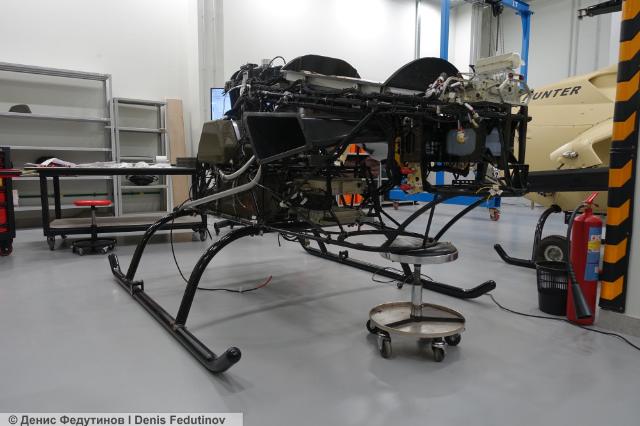
The assembly of the Hunter unmanned helicopter in one of the workshops of the UAVHeli company. © Denis Fedutinov
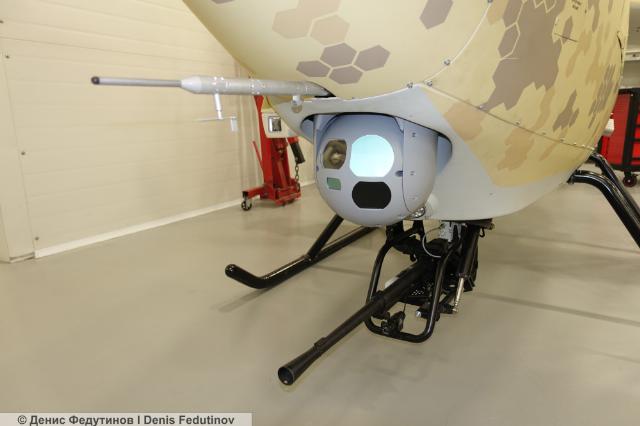
Located under the nose of the Hunter UAV is a multi-channel gyrostabilized surveillance system of the Peleng company, in the body of which several elements are integrated, including a thermal imaging module, an HD module of the visible range, a laser rangefinder, as well as a stabilized turret located below with a 7.62mm Kalashnikov machine gun of a tank modification with an ammunition set of 550 rounds. The weapon system also includes two UB-4 launchers for four unguided C-5 57 mm caliber aircraft missiles each. In addition, a BK-2,5-16 cassette with 16 aviation anti-tank ammunition can be installed under the fuselage. © Denis Fedutinov
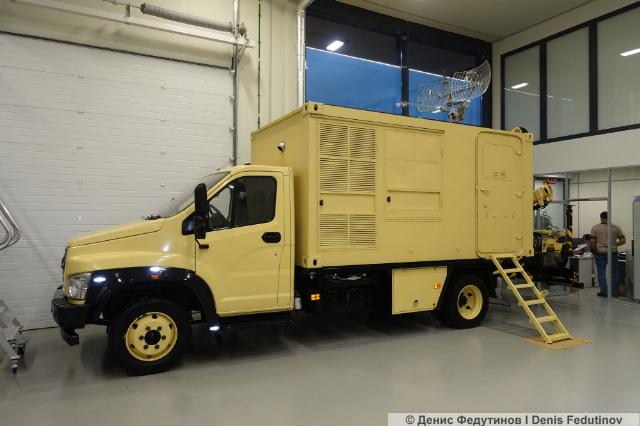
The transported means of ground support (TSN). © Denis Fedutinov
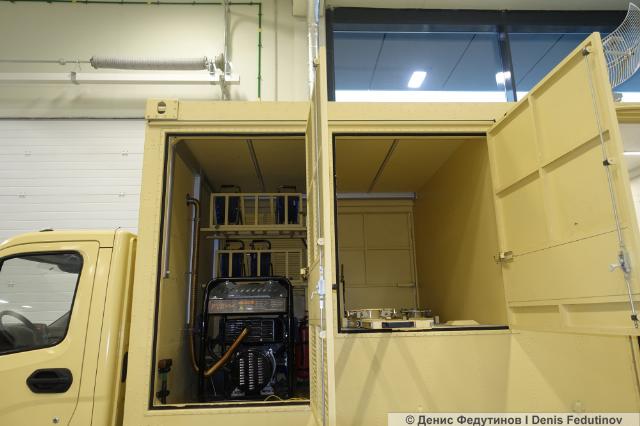
Internal compartments of the transported ground support vehicle. The compartment on the left is an airfield power source with a gasoline electric generator. The compartment on the right is a refueling station for 800 liters of fuel. © Denis Fedutinov
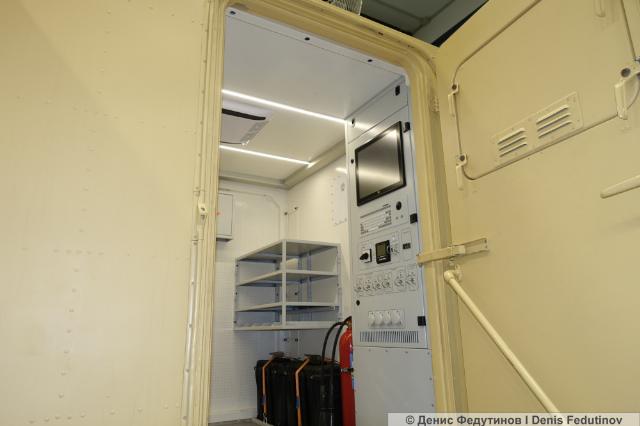
The "Mobile workshop" compartment of the machine of the transported ground support facility. © Denis Fedutinov
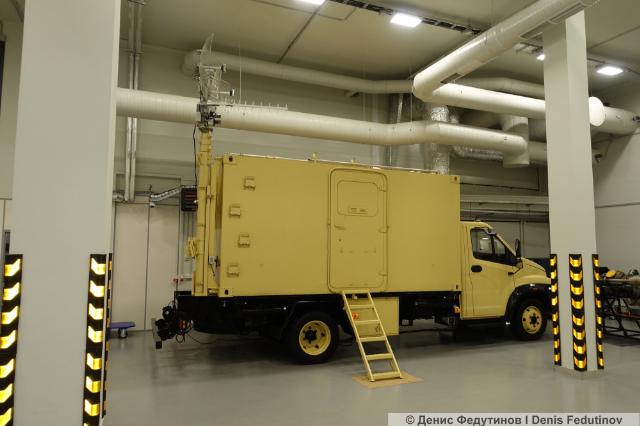
Ground control station (NSO) of the Hunter unmanned complex. In a typical configuration, it is manufactured in a container design. The deployment time of the NSO is 10 minutes. The design makes it easy to overload and transport the container. The exhaust and air flow inside the container are regulated by the automatic filter ventilation system FVUA-100, which allows the UAV control calculation to be protected from chemical and radiation contamination for up to 5 hours. © Denis Fedutinov

The NSO is equipped with a telescopic mast of the ATA-2400 antenna orientation system, an automatic lifting mechanism of the weather station and two antennas of the communication system. The maximum range of the data transmission channel for exchange with the UAV is 150 km. © Denis Fedutinov
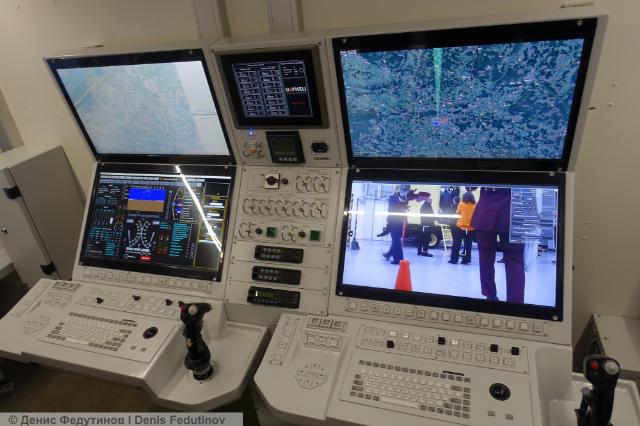
Workplaces of operators of the Hunter UAV complex. There are 4 automated operator workstations in the NSO. The logic and algorithms of behavior used by the UAV depend on the selected operating mode. © Denis Fedutinov
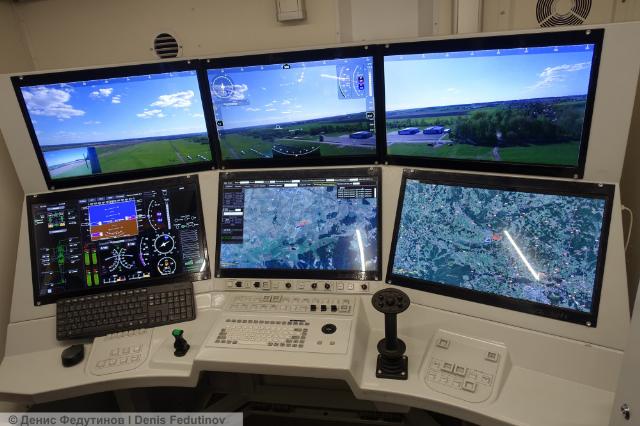
Inside the ground control station of the Hunter UAV complex. Automated workplace of the UAV payload operator. In addition to its own payload management modes, including video surveillance, recording and video capture, there is also access to the necessary information about the UAV flight: flight task planning, current statuses, etc. © Denis Fedutinov
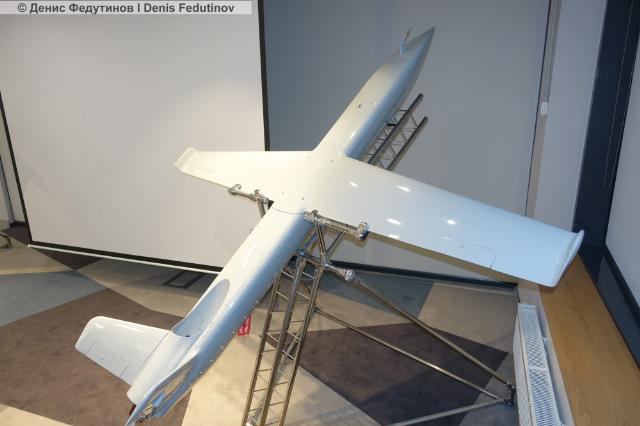
The Ascalon barrage munition is designed to destroy air defense systems, MLRS and artillery systems in firing positions, enemy reconnaissance and electronic warfare systems, columns of lightly armored and automotive vehicles, enemy manpower and equipment. The UAV is built according to a normal aerodynamic scheme with a high-mounted wing and a V-shaped tail, equipped with a turbojet engine that allows speeds up to 700 km/h. The practical flight range is 310 km, the maximum flight duration is 60 minutes, flight control is automatic (according to coordinates), the warhead is high-explosive fragmentation, weighing 10 kg. © Denis Fedutinov
The maximum duration of the flight reaches 45 minutes. As a shock load, the device is equipped with a high-explosive fragmentation warhead weighing 10 kg (explosive mass - 7 kg). The complex is equipped with communication facilities with a range of up to 100 km. © Denis Fedutinov">
The Mirotvorets barrage ammunition of the aircraft type was created according to a two-girder scheme. The maximum take-off weight of the device is 46 kg, the wingspan is 2.6 m. The Peacemaker's engine, like Ascalon's, is turbojet. It provides a maximum speed of 450 km/h. The maximum duration of the flight reaches 45 minutes. As a shock load, the device is equipped with a high-explosive fragmentation warhead weighing 10 kg (explosive mass - 7 kg). The complex is equipped with communication facilities with a range of up to 100 km. © Denis Fedutinov
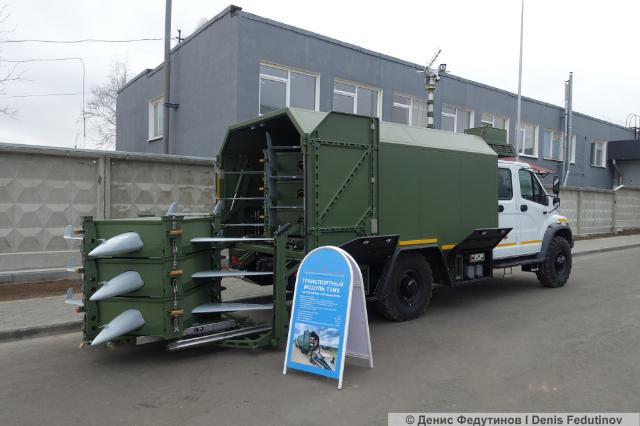
Transport module T3M6. The module, made on the platform of the GAZ-S42A43-103V car, is designed to transport loaded and ready-for-combat barrage ammunition of the Ascalon and Peacemaker types, transport a towed launcher and personnel of the complex calculation. The number of UAVs transported is 6 pieces. The deployment time is 5 minutes. © Denis Fedutinov
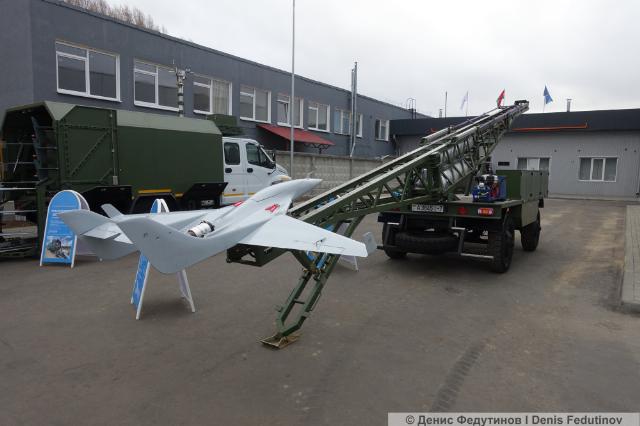
The Peacemaker barrage munition is on the launcher. The installation is designed to launch an airplane-type UAV. The principle of operation is pneumatic. The deployment time is no more than 15 minutes. © Denis Fedutinov
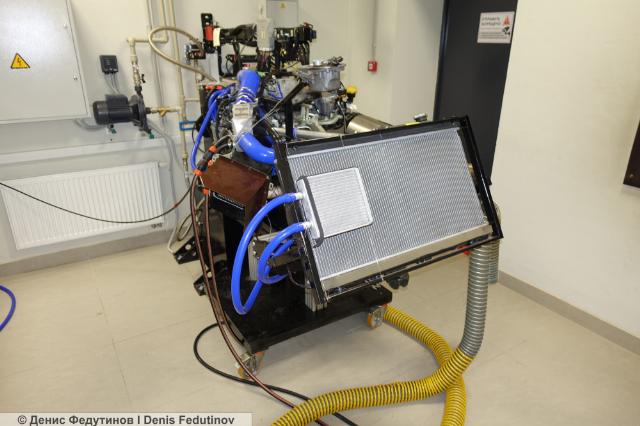

The test bench of UAV engines. © Denis Fedutinov

In one of the open spaces of the UAVHeli design bureau. © Denis Fedutinov
